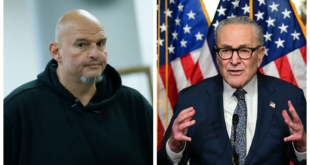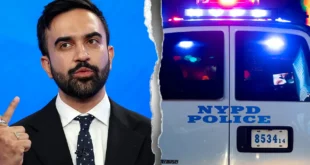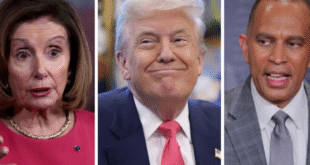This article may contain commentary which reflects the author’s opinion.
In the marble halls of the Supreme Court, a legal battle that has simmered for nearly a century reached a pivotal moment that could fundamentally alter the balance of power in Washington. What began as a dispute over one presidential appointment has evolved into a constitutional confrontation with implications that extend far beyond any single administration or political party.
The stakes of this judicial showdown reach into every corner of federal governance, touching questions that have divided legal scholars, political theorists, and presidents since the New Deal era. At its heart lies a fundamental question about American democracy: How much control should a president have over the vast federal bureaucracy, and what happens when unelected officials wield power that presidents cannot easily revoke?
The Commissioner Who Refused to Leave
The legal drama began in March when President Donald Trump moved to dismiss FTC Commissioner Rebecca Slaughter, a Democrat appointed by former President Joe Biden. What should have been a routine administrative action quickly became a constitutional crisis that would test the limits of presidential authority and challenge decades of established legal precedent.
Slaughter, whose seven-year term was set to run until 2029, represented more than just one Democratic voice on the commission. As the last Democratic appointee following Trump’s earlier dismissal of Commissioner Alvaro Bedoya, her removal would effectively give Republicans complete control over the Federal Trade Commission, one of the most powerful regulatory agencies in the federal government.
The timing of Trump’s action was strategic and significant. By moving quickly to reshape the FTC’s composition, the president signaled his intention to pursue an aggressive deregulatory agenda that would require cooperative commissioners willing to dismantle many of the policies implemented during the Biden administration.
Slaughter’s decision to fight her dismissal in court, rather than quietly accepting it like her colleague Bedoya, transformed what could have been a minor political dispute into a landmark constitutional case. Her legal challenge forced the courts to grapple with questions about presidential power that had remained largely settled since the 1930s.
The personal stakes for Slaughter were enormous. Not only did her legal career hang in the balance, but her resistance represented the broader Democratic Party’s attempt to preserve some institutional power in the face of complete Republican control of the federal government.
The 1935 Precedent Under Fire
At the center of this legal battle stands a 1935 Supreme Court decision, Humphrey’s Executor v. United States, which has governed presidential removal power for nearly nine decades. The case established that presidents cannot remove certain federal commissioners without cause, creating a category of quasi-independent officials who serve fixed terms regardless of which party controls the White House.
This precedent emerged during the New Deal era as part of a broader effort to insulate certain government functions from political interference. The theory was that agencies like the FTC needed stability and independence to carry out their regulatory missions effectively, free from the political pressures that might compromise their decision-making.
The Humphrey’s Executor decision reflected a particular view of government that saw value in creating pockets of expertise and continuity that could survive changes in political leadership. Under this framework, commissioners could only be removed for “inefficiency, neglect of duty, or malfeasance in office” – not simply because a new president disagreed with their policy positions.
For Trump’s legal team, this 90-year-old precedent represents an unconstitutional limitation on presidential authority. Solicitor General D. John Sauer argued that “the president and the government suffer irreparable harm when courts transfer even some of that executive power to officers beyond the President’s control.”
This argument reflects a broader conservative legal theory known as the “unitary executive,” which holds that the Constitution grants the president complete control over the executive branch. Under this interpretation, any limitation on the president’s ability to remove executive officials violates the constitutional separation of powers.
The stakes of this constitutional debate extend far beyond the FTC. If the Supreme Court overturns or significantly narrows Humphrey’s Executor, it could affect the independence of numerous federal agencies, from the Federal Reserve to the Securities and Exchange Commission.
A Federal Judge’s Resistance
The legal battle took an unexpected turn in July when a federal judge sided with Slaughter, citing the 1935 Humphrey’s Executor precedent to block her removal. This decision represented a significant victory for those who argue that certain federal positions should remain insulated from direct presidential control.
The federal judge’s ruling was based on established legal precedent, but it also reflected broader concerns about the politicization of federal agencies. By preventing Trump from removing Slaughter, the court was essentially arguing that the FTC’s independence was more important than the president’s desire for political control.
This judicial intervention created an immediate constitutional crisis. Trump found himself in the unusual position of being unable to remove a federal official he had already dismissed, while Slaughter remained in legal limbo, technically holding her position but facing an uncertain future.
The situation highlighted the tension between different branches of government and different theories of constitutional interpretation. While Trump’s Justice Department argued for expansive presidential authority, the federal court prioritized institutional independence and established precedent.
The ruling also demonstrated how lower courts can become battlegrounds for broader constitutional disputes. Rather than simply applying existing law, federal judges increasingly find themselves making decisions that have far-reaching implications for the structure of American government.
The Supreme Court Intervenes
The Supreme Court’s decision to take up Slaughter’s case represented a significant escalation in the constitutional dispute. Chief Justice John Roberts initially blocked Slaughter’s reinstatement through an emergency order, signaling that the conservative majority was sympathetic to Trump’s arguments about presidential removal power.
Monday’s 6-3 decision followed predictable ideological lines, with the court’s six conservative justices supporting Trump’s position while the three liberal justices dissented. This alignment suggests that the court’s conservative majority is prepared to undertake a significant revision of established precedent regarding presidential authority.
The Associated Press reported that the ruling “signaled the conservative majority is poised to overturn or narrow a 1935 Supreme Court decision that found commissioners can only be removed for misconduct or neglect of duty.” This characterization suggests that the court’s final decision, expected after oral arguments in December, could fundamentally alter the landscape of federal agency independence.
The Supreme Court’s willingness to reconsider nearly century-old precedent reflects the broader conservative legal movement’s ambition to reshape American governance. By potentially expanding presidential removal authority, the court could give future presidents significantly more control over the federal bureaucracy.
The timing of the court’s intervention also reflects the justices’ recognition that this case presents an opportunity to resolve longstanding questions about the separation of powers. Rather than allowing the dispute to drag on through multiple court challenges, the Supreme Court chose to address the constitutional issues directly.
Broader Implications for Federal Governance
The Slaughter case represents just one front in a broader conservative effort to reshape the federal bureaucracy and reduce what critics call the “administrative state.” If successful, these efforts could fundamentally alter how federal agencies operate and how much independence they maintain from political control.
The implications extend to numerous federal agencies that currently operate with some degree of independence from direct presidential oversight. The Federal Reserve, which makes crucial decisions about interest rates and monetary policy, could find its independence challenged if the Supreme Court significantly expands presidential removal authority.
Similarly, agencies like the Securities and Exchange Commission, which regulates financial markets, and the Consumer Financial Protection Bureau, which oversees consumer lending, could become more directly subject to presidential control. This change could make these agencies more responsive to political priorities but potentially less stable and predictable in their operations.
The debate also touches on broader questions about expertise and political accountability in government. Supporters of agency independence argue that certain functions require technical expertise and long-term thinking that can be compromised by political interference. Critics contend that unelected officials should not wield significant power without direct accountability to elected leaders.
A Parallel Victory: California’s Climate Mandates Challenged
In a related development that demonstrates the Supreme Court’s broader conservative approach to federal regulation, the justices recently handed California’s climate policies a significant defeat in a separate 7-2 ruling. This decision allowed energy producers to challenge California’s aggressive green energy mandates, including requirements for electric vehicle market dominance by 2035.
Justice Brett Kavanaugh’s majority opinion in this case reflected similar themes about federal overreach and regulatory authority. “The government generally may not target a business or industry through stringent and allegedly unlawful regulation, and then evade the resulting lawsuits by claiming that the targets of its regulation should be locked out of court as unaffected bystanders,” Kavanaugh wrote.
This ruling, combined with the FTC case, suggests a Supreme Court majority that is increasingly skeptical of expansive federal regulatory authority. The fact that even one liberal justice joined the majority in the California case indicates that concerns about regulatory overreach may be broader than traditional ideological divisions suggest.
The California decision also highlighted issues of federal-state relations and the limits of state authority to impose regulations that have national implications. By allowing energy producers to challenge California’s mandates, the court opened the door for broader challenges to state-level climate policies.
Chet Thompson, president and CEO of American Fuel & Petrochemical Manufacturers, celebrated the ruling as a rejection of California’s regulatory overreach. “Congress did not give California special authority to regulate greenhouse gases, mandate electric vehicles or ban new gas car sales, all of which the state has attempted to do through its intentional misreading of statute,” Thompson told the Daily Caller.
The December Oral Arguments: What to Expect
The Supreme Court’s decision to hear full oral arguments in December suggests that the justices recognize the significance of the constitutional questions at stake in the Slaughter case. These arguments will provide an opportunity for both sides to present their most compelling legal theories about presidential removal authority.
Trump’s legal team will likely argue that the Constitution’s grant of executive power to the president necessarily includes the authority to remove executive officials. They may contend that limitations on removal authority effectively create a “fourth branch” of government that lacks constitutional foundation.
Slaughter’s defenders will probably emphasize the importance of agency independence and the reliance interests created by nearly nine decades of settled precedent. They may argue that certain government functions require insulation from political pressure to operate effectively.
The oral arguments will also provide insight into how the justices are thinking about the broader implications of their potential decision. Questions from the bench may reveal whether the court is prepared to make sweeping changes to federal agency structure or prefers a more limited ruling.
Legal observers will be particularly interested in how the court’s newest members approach these questions. Justices who were appointed based partly on their views about constitutional interpretation and federal power will have an opportunity to demonstrate how those views translate into concrete legal decisions.
Historical Context and Constitutional Theory
The dispute over presidential removal authority reflects deeper disagreements about the nature of American constitutional government that date back to the founding era. The Constitution’s text provides limited guidance on these questions, leaving later generations to interpret broad grants of power in specific circumstances.
The framers of the Constitution clearly intended to create a system of separated powers with checks and balances, but they left many details about how that system would work in practice to be resolved through experience and interpretation. The question of presidential removal authority represents one area where constitutional text provides insufficient guidance for resolving modern disputes.
The conservative legal movement’s emphasis on the “unitary executive” theory represents one approach to resolving these ambiguities. This theory holds that the Constitution’s grant of executive power to the president necessarily includes authority over all executive functions, including the removal of executive officials.
Liberal constitutional scholars often counter that the Constitution’s structure suggests the framers intended to create multiple power centers that could check each other’s authority. Under this interpretation, agency independence serves the constitutional value of preventing any single official from accumulating too much power.
Economic and Policy Implications
The outcome of the Slaughter case could have significant implications for American economic policy and business regulation. Federal agencies like the FTC play crucial roles in antitrust enforcement, consumer protection, and market regulation that directly affect business operations and economic competition.
If the Supreme Court expands presidential removal authority, it could make federal agencies more responsive to presidential policy priorities but potentially less predictable in their enforcement activities. Businesses that operate in heavily regulated industries may find that regulatory approaches change more dramatically with changes in presidential administration.
The case also reflects broader debates about the proper role of government in regulating business activity. Conservative critics of the “administrative state” argue that federal agencies have accumulated too much power and operate with insufficient democratic accountability.
Liberal defenders of federal regulation contend that agencies provide essential protections for consumers, workers, and the environment that might be compromised if they become too subject to political pressure. They argue that some degree of independence allows agencies to focus on their missions rather than political considerations.
The Road Ahead: Implications for Future Administrations
Regardless of how the Supreme Court ultimately rules in the Slaughter case, the dispute has already highlighted fundamental questions about American governance that will continue to influence political and legal debates for years to come.
If the court significantly expands presidential removal authority, it could give future presidents of both parties greater control over federal agencies but also greater responsibility for their actions. Presidents might find it easier to implement their policy agendas but harder to deflect blame when agencies make unpopular decisions.
Conversely, if the court maintains existing limitations on removal authority, it could preserve agency independence but also maintain ongoing tensions between presidents and federal bureaucrats who may not share their policy priorities.
The case also represents part of a broader conservative legal project to reshape American government by reducing federal regulatory authority and expanding presidential power. The success or failure of this project will depend not only on Supreme Court decisions but also on political developments and public attitudes toward federal regulation.
Conclusion: A Constitutional Crossroads
The Supreme Court’s consideration of Rebecca Slaughter’s challenge to her dismissal represents more than just one person’s employment dispute – it embodies fundamental questions about American constitutional government that have persisted since the founding era.
The court’s ultimate decision will affect not only the immediate fate of federal commissioners but also the broader structure of American governance. By potentially expanding presidential removal authority, the justices could give future presidents significantly more control over federal agencies while potentially reducing the independence that has characterized these institutions for nearly a century.
The December oral arguments will provide crucial insights into how the court’s conservative majority intends to balance competing constitutional values of democratic accountability and institutional independence. The justices’ questions and comments may reveal whether they are prepared to undertake sweeping changes to federal governance or prefer more incremental adjustments to existing precedent.
Whatever the court decides, the Slaughter case will likely be remembered as a pivotal moment in the ongoing evolution of American constitutional law and the eternal struggle to balance presidential authority with institutional independence in a complex modern democracy.


